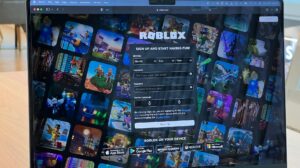Not so long ago, Meta rolled out a paid ad-free subscription option for Facebook and Instagram users in Europe, a move in response to a ruling by the European Union’s top court, which stipulated that Meta must obtain consent before displaying ads, in compliance with the stringent EU data privacy regulations. Privacy comes with a price tag—roughly around 10-13 euros per month, in this case.
The question is, should users have to pay to keep their data private? It assumes that, by default, users have no ownership over their data.
Coercion in Consent: Unravelling Monopoly and Limited Alternatives
The public outcry that followed Zoom’s amendments (which the company later revised) to its terms of service is another case on point. To quote an article from Wired, “even people who might otherwise have been happy to help improve a tool they use all the time will balk when they do not have the opportunity to affirmatively consent”.
If users are simply told that their information will be used by a platform, those who don’t like it are expected to use something else. Of course, there is an option to “disagree”, but if clicking on “agree” is the only way to continue using an application that doesn’t have any appealing alternatives, we tend to, well, agree. There really isn’t much of a choice, is there?
When companies maintain an unwavering monopoly over services that are integral to our daily lives, an ensuing power imbalance is bound to surface. More often than not, users receive the short end of the stick.
Navigating the Overwhelming Realm of Consent
The crux of the matter lies in the difference between consent and meaningful consent, a difference often taken for granted. Laws might require the former but not necessarily the latter at all times. Simply put, the meaning of consent gets lost in legalese. In 2008, Lorrie Cranor, a professor of engineering and public policy at Carnegie Mellon University, along with a collaborator estimated that spending time reading and consenting to the privacy policies of websites visited by Americans would amount to 244 hours annually. A recent research by NordVPN revealed that, with an average of 6,938 words and 29-minute reading time for each policy, it would take around nine hours to read the policies of the top 20 most visited American websites. That is a tremendous amount of time to spend, and a torrent of complex information to absorb.
In an ideal world, privacy policies must serve to reassure users that their privacy is well taken care of, consequently building trust between businesses and their customers. Whereas, in reality, these policies only tend to overwhelm users, and trust remains a line drawn in water. How can there be informed consent if users are too overwhelmed to fully grasp the information?
Empowering Users: Blockchain and Data Ownership
Pay-for-privacy models may allow companies to stay out of legal hassle to an extent, but it only makes things worse for users. They are given an unfair choice between paying to avoid their data being used for ad services or consenting to the utilization of their personal data as long as they want to use the platform. That’s extortion. If there is anybody that should be paying, it should be the companies seeking user data, not the users themselves. Micropayments (where companies pay individuals for their data) could be an interesting solution to consider here.
Micropayments are small financial transactions, often carried out online, with varying sizes, but typically amounting to less than a dollar, and in some instances, even less than a cent. Through the integration of blockchain technology, micropayments facilitate and streamline the process of handling such small transactions, overcoming the traditional challenges associated with transaction fees and processing overhead. Users can be compensated with micropayments in exchange for their personal data that they willingly choose to share.
Those seeking access to particular user data can initiate a request and propose a fee for permission. Serving as a decentralized ledger, the blockchain records these access requests and corresponding fees, thereby ensuring transparency and accountability throughout the exchanges.
Decentralized Interfaces: A Future of User Autonomy
Consider a future where user’s data stays with the user, and companies offer interfaces for that data. The idea is to empower users in terms of data control and decision-making by providing them with interfaces or tools to interact with, manage and potentially share their data, while still maintaining ownership and control over it.
Companies would require a valid certificate from the user, indicating their permission to use the data, and the validity of the certificate can be checked on the blockchain. This way, users have the authority to give access in a transparent manner and also to revoke that access by making the certificate invalid, thereby taking away the legal rights to use that data. If companies still use that data without authorization, they are breaking the law.
When a user agrees to grant access to their data, they can securely share the requisite encryption keys with the buyer enabling them to unlock the data. This crucial step preserves the user’s complete control over data access and adheres to the principles of informed consent and data ownership.
Having data ownership also offers a potential solution to the problem of lock-in where users are essentially tied to a specific platform or service and find it difficult to switch to alternatives. If you own your data, it means that you are not confined to a specific platform as you are free to move your data to a competitor’s platform. This flexibility allows users to participate in a platform while keeping options open for them to switch to another platform if needed. What this also means is that users can choose to engage with apps that are in line with their privacy preferences.
For instance, by leveraging blockchain, you can create a video call protocol that allows users from Zoom, Google Meet and Teams to have calls with each other using their own preferred applications. These applications serve as interfaces, granting users ownership over their data and contact details. This innovative approach has the potential to dismantle data silos and liberate users from having to adhere to a specific platform solely because their peers use it. No longer bound by the compulsion to conform, individuals can enjoy the freedom to choose their preferred platform without sacrificing the ability to communicate seamlessly with others.





